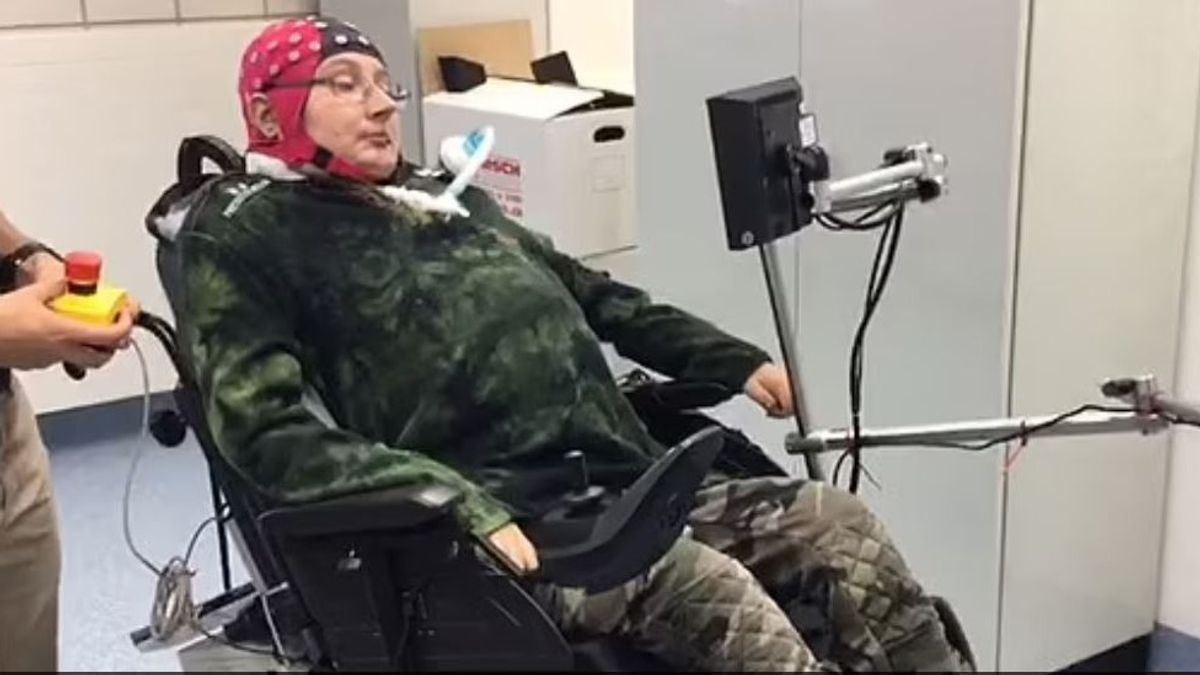JAKARTA The discovery of a controlled wheelchair with a mind capable of translating brain signals into wheel movements now brings hope to more than 5.4 million Americans with motor disabilities.
The technology, created by researchers at The University of Texas in Austin, includes a hat or skullcap with 31 electrodes designed to detect signals in brain areas that regulate movement and laptops mounted on wheelchairs so that AI can translate signals into wheel movements.
Through this tool, all the patient has to do is imagine them moving their hands and feet.
To move to the right, users envision moving both hands and to move to the left, they envision moving both legs.
"The concept of a mind-powered wheelchair has been studied for years, but most of the projects have used the subject of non-damping defects or stimuli that directs the device to more or less control people than vice versa," the researchers shared at a press conference, quoted by the Daily Mail.
In this case, three people with tetraplegia, namely the inability to move their arms and legs due to spinal cord injuries, were able to operate wheelchairs in a naturally messy environment with various success rates, said the researcher at the campus.
The electrode-enhanced head cover provides a non-invasive method to collect brain signals and send them to the nearest device, in this case the laptop behind the wheelchair.
The first part of the experiment involved patient training on how to use a mind-controlled wheelchair.
Researchers instructed them to imagine as if they were moving their own hands and feet; this was then given a different direction in the system. The second contributor to the success of this research was borrowed from robotics.
The wheelchair is designed with sensors exploring the environment and robotic intelligence software that helps the chair fill the user's command vacancy to facilitate accurate and safe wheelchair movements.
According to a New Scientist report, the team tested all of them with three participants, who were asked to move left or right 60 times.
During the first 10 training sessions, 'People 1' delivered the correct order an average of 37 percent, which increased to 87 percent accuracy with their last 10 training sessions. Meanwhile, the accuracy of the wheel of 3' increased from 67 percent to 91 percent.
While People 2 consistently direct with an average accuracy of 68 percent during their training sessions.
Then the actual test was carried out, namely participants were asked to move wheelchairs to four checkpoints in the room containing beds, chairs and medical equipment.
All participants must pass obstacles such as room dividers and hospital beds, which are made to simulate the real world environment.
The first person completed the course in about four minutes, with an accuracy of 80 percent during 29 attempts. 3 people completed it in seven minutes with a success of 20 percent during 11 attempts. However, 2 people reached the third checkpoint in about 5 minutes for 75 percent of their efforts, but failed to complete the track.
"It seems to be for someone to gain good machine-brain interface controls that allow them to carry out relatively complex daily activities such as driving wheelchairs in a natural environment, it requires some neuroplastic reorganization in our cortex," said
The English, Chinese, Japanese, Arabic, and French versions are automatically generated by the AI. So there may still be inaccuracies in translating, please always see Indonesian as our main language. (system supported by DigitalSiber.id)








